
Learn about the science of rainbows and prisms in a way that you can try at home!
- Subject:
- Physical Science
- Material Type:
- Activity/Lab
- Author:
- National Air and Space Museum
- Date Added:
- 09/08/2022

Learn about the science of rainbows and prisms in a way that you can try at home!

Do you know how waves work? Do you know what they have to do with stealth technology? Find out in this hands on demo that you can try at home.
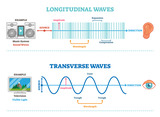
In this hands on, exploratory lesson of waves, students will learn about longitudinal and transverse waves. Through mathematical reasoning, students will describe relationships between aspects of waves and a wave’s relative amount of energy. Students will use questioning skills to push the lesson along and facilitate engagement and discovery. The use of hands on models will help the students to discover relationships and characteristics of waves and go on to create their own models. Students will be able to...identify sound waves as longitudinal waves that travel through a mediumrecognize the dB levels of everyday soundsunderstand energy causes the vibrations that allow the sound waves to travel.
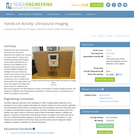
Students learn about ultrasound and how it can be used to determine the shapes and contours of unseen objects. Using a one-dimensional ultrasound imaging device (either prepared by the teacher or put together by the students) that incorporates a LEGO(TM) MINDSTORMS(TM) NXT intelligent brick and ultrasonic sensor, they measure and plot the shape of an unknown object covered by a box. Looking at the plotted data, they make inferences about the shape of the object and guess what it is. Students also learn how engineers use high-frequency waves in the design of medical imaging devices, the analysis of materials and oceanographic exploration. Pre/post quizzes, a worksheet and a LEGO rbt program are provided.
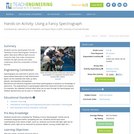
Students use the spectrograph from the "Building a Fancy Spectrograph" activity to gather data about different light sources. Using the data, they make comparisons between the light sources and make conjectures about the composition of these sources.

Learn how waves interact when Yard characters Jack and Francis find a mysterious wave combinator in the yard.
In this game players must learn about simple waves that can be described by their amplitude, wavelength and offset. This puzzle game allows players to combined two waves to form a new wave, following rules of constructive and deconstructive interference.
Wave Properties
Developing and Using Models
Amplitude, Offset, Wavelength, Frequency
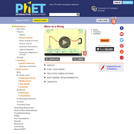
Watch a string vibrate in slow motion. Wiggle the end of the string and make waves, or adjust the frequency and amplitude of an oscillator. Adjust the damping and tension. The end can be fixed, loose, or open.
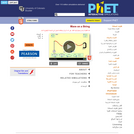
Watch a string vibrate in slow motion. Wiggle the end of the string and make waves, or adjust the frequency and amplitude of an oscillator. Adjust the damping and tension. The end can be fixed, loose, or open.
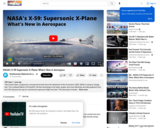
QueSST will test technology to fly faster, quieter, and more efficiently, and data gathered from the X-59 will pave the way for commercial supersonic flight over land.
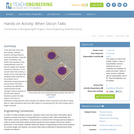
In the first half of this two-part activity, students practice solving problems involving refraction using the index of refraction and Snell's law equations; they mathematically solve for precise angles and speeds caused by refraction. In the second half of the activity, a hands-on lab, they apply the analytical skills required by the problem set to reflectance measurements of porous silicon thin films, including how reflectance measurements would change if various aspects of the film were altered. Students predict the data output in the form of reflectance measurements when samples are altered, which connects to the idea of being able to make predictions about the data output of a biosensing thin film that couples with a target molecule.